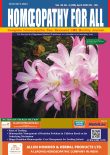HPTLC Fingerprint Profiling and Preliminary Phyto-Chemical Analysis of Azadirachta Indica (Nimba) Leaf & Stem Bark.
Keywords:
Azadirachta indica, Phytochemical analysis, HPTLC fingerprintingAbstract
Medicinal plants have been found useful in the cure of a number of diseases including bacterial diseases. Nimba is a very useful medicinal plant in the sub-continent and each part of the plant has medicinal properties. Almost every part of the plant has been in use since ancient times to treat a number of human ailments and also as a household pesticide. The extract from bark, leaves, fruits and root have been used to control leprosy, intestinal helminthiasis and respiratory disorders in children. Flavonoids, flavono glycosides, dihydrochalcones, tannins and others are also important constituents of bark, leaves, fruits and flowers of Nimba. Present study aimed at development and establishment of the HPTLC fingerprint profile and phytochemical screening of Nimba leaf and stem bark.
Downloads
References
Biswas, K., Chattopadhyay, I., Banerjee, R. K., & Bandyopadhyay, U. (2002). Biological activities and medicinal properties of neem (Azadirachta indica). Current Science, 82, 1336–1345.
Raja, R. V., Ramanathan, T., & Savitha, S. (2009). Studies on wound healing property of coastal medicinal plants. Journal of Biosciences Technology, 1, 39–44.
Cohen, M. L. (2000). Changing patterns of infectious disease. Nature, 406, 762–767.
Chakravarthy, B. K., & Gode, K. D. (1985). Isolation of epicatechin from Pterocarpus marsupium and its pharmacological action. Planta Medica, 1, 56–59.
Verkerk, R. H. J., & Wright, D. J. (1993). Activity of neem seed kernel extract and synthetic azadirachtin against larvae of Plutella xylostella. Pesticide Science, 37, 83–91.
Jacobson, M. (1986). Review of neem research in the United States. In J. C. Locke & R. H. Lawson (Eds.), Proceedings of a workshop on neem’s potential in pest management program (pp. 4–14). USDA-ARS, Beltsville, MD. ARS-86.
Chhetri, H. P., Yogol, N. S., Sherchan, J., K. C., A., Mansoor, S., & Thapa, P. (2008). Phytochemical and antimicrobial evaluations. Kathmandu University Journal of Science, Engineering and Technology, 1(5), 49–54.
Talukdar, A. D., Choudhary, M. D., Chakraborty, M., & Dutta, B. K. (2010). Phytochemical screening and TLC profiling of plant extracts Cyathea gigantea (Wall. Ex. Hook.) Haltt. and Cyathea brunoniana Wall. ex. Hook. (Cl. & Bak.). Assam University Journal of Science & Technology: Biological and Science, 5(1), 70–74.
Anyanwu, G. I., & Dawe, A. (2012). Pharmacological and phytochemical screening of Hyptis suaveolens Poit. (Lamiaceae) for bioactivity in rodents. International Journal of Research in Plant Science, 2(3), 50–55.
Harborne, J. J. (1984). Phytochemical methods: A guide to modern techniques of plant analysis (2nd ed., p. 85). Chapman and Hall.
Ansari, M. Y., Wadud, A., Ehteshamuddin, & Bano, H. (2013). Pharmacognostical evaluation of root of Gumma (Leucas cephalotes Spreng.). Indian Journal of Natural Products and Resources, 4(1), 88–95.
Anonymous. (2007). Protocol for testing of Ayurvedic, Siddha & Unani medicines. Pharmacopoeial Laboratory for Indian Medicines, Ghaziabad.
Government of India, Department of AYUSH, PLIM. (2001). Protocol for testing of Ayurvedic, Siddha & Unani medicines. Ghaziabad.
World Health Organization. (2004). WHO guidelines on safety monitoring of herbal medicines in pharmacovigilance systems (Vol. 4, p. 114). Geneva: WHO.
Tripathi, M., & Sikarwar, R. L. S. (2015). Pharmacognostic studies on Plaksa (Ficus virens Ait.) stem bark. Indian Journal of Natural Products and Resources, 6(1), 27–32.
Tripathi, M., Sikarwar, R. L. S., Tiwari, A., & Dwivedi, N. (2015). Pharmacognostical identification of ingredients in Laghulai curna. Indian Journal of Traditional Knowledge, 14(4), 531–536.
Tripathi, M., & Sikarwar, R. L. S. (2014). Pharmacognostic standardization of stem bark of Erythrina variegata L. Journal of the Indian Botanical Society, 93(3&4), 248–253.




